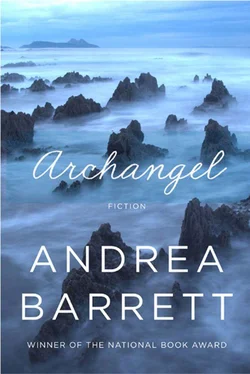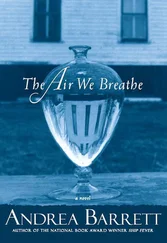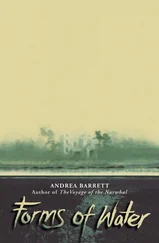
ON THE MORNING after the August full moon, Henrietta found herself in a little boat with Daphne, Edward, and the professor’s wife, who now behaved as if she hardly knew Henrietta. The china they’d scrubbed, the beds they’d made, their arms mirroring each other as they snapped sheets in the air, apparently counted for nothing in the light of the lectures Henrietta had skipped and her obvious absorption in something other than the professor. It wasn’t just the book, which Henrietta didn’t think the professor’s wife had seen. More likely it was the sight of her and Daphne talking so intently outside of class, and the way Daphne acted as a magnet for the other students interested in Darwin’s ideas. In the dining hall the tables were defined, now, by scientific beliefs as well as personal alliances. She and Daphne had places at the far end of the table nearest the door, among a particularly lively group — David, Rockwell, Charles, Lydia, and a few others — swayed by Darwinism. While the professor might not know what bound them, his wife surely did.
Henrietta sat next to Daphne in the stern of their dory, facing Edward, who rowed; the professor’s wife sat in the bow, lecturing on the transformations of the Acalephs. “An excellent example of alternate generations,” she said in her clear voice. Around them bobbed fourteen other dories, the rest of their little fleet. “To the untrained eye, their different phases appear so distinct and apparently unconnected that previous observers assumed they were separate species.”
The sandbar flashed beneath the bottom of the boat. Into the water dipped Edward’s oars, the blades slicing the surface, pulling through the depths, rising, and then, with a deft roll of the wrist, flattening to slip through the air. Henrietta tried to visualize the sequence of transformations. “In the autumn, eggs of some species hatch into free-swimming globular bodies, covered with cilia. After a while these attach themselves to a solid surface and then assume a hollow hydroid shape. In early spring, buds appear on the hydroids, each eventually assuming the shape of a medusoid disc that grows and then frees itself. The full-grown medusae of some species swarm together at this time of year, for the purposes of spawning.”
One, two, three different stages. The sea was white and shining, the surface quiet but the whole mass undulating in long, slow, shallow swells. Sea urchins too, said the professor’s wife, underwent fantastic transformations. A narrow puddle at the bottom of the boat moved forward and back, forward and back, in time with Edward’s strokes, while the two buckets awaiting their specimens tilted gently from side to side and the stack of glass bowls clicked together, flashing as the sun hit the rims. The water was glittering too, the jumbled lights making Henrietta drowsy.
“Again and again,” said the professor’s wife, her words drifting by, “we see one creature seem to change into another.” Henrietta touched elbows with Daphne, her friend as fresh and alive as a tree, and for a moment her soul stretched away from her body.
Grub to beetle, larva to barnacle. Now the professor’s wife was speaking about the majestic and unexpected paths by which God arrived at the completion of his designs. “The Divine handiwork,” she concluded, “exists to remind us always of the greater wonder, the mystery of the moment when God became man.”
Henrietta’s soul snapped elastically back into place. That wasn’t right; those two domains were best kept separate. She turned toward Daphne, who was frowning, and then she bent once more, searching for transparent creatures in transparent water. Her eyes were sore, her head ached, her stomach was announcing, with peculiar clarity, its exact contours.
Splish, said Edward’s oars. Splish, splish .
The professor, from the dory just ahead of theirs, called out a question to the fleet. “What are the three classes of Acalephs?”
“The ctenophores,” said Edward. “And the discophores and the hydroids.”
Daphne, whose lower back now touched Henrietta’s — they were leaning over opposite sides, skirts together, heads and arms far apart — said something Henrietta couldn’t hear. The professor’s wife told Edward to lift his oars once they rounded the rocky point. The bowls clicked, the edges flashed, and the drops falling from Edward’s oars sparkled like broken glass.
“Look,” said Daphne, pointing down.
Henrietta swallowed twice and leaned farther over the side. The water had thickened, clotted, raised itself into disconcerting lumps. Suddenly they were floating not on water but on a shoal of jellyfish so thick that the ones nearest the surface were being pushed partially out of the water by those below, and so closely packed that when Edward lowered one oar to turn the boat, he had to force a path between the creatures. All the boats, Henrietta saw, were similarly surrounded; the shoal formed a rough circle fifty feet wide, quivering like a single enormous medusa.
“Pull close together!” the professor shouted from the dory ahead of them. “Now halt! Everyone!” He’d risen to his feet and was standing, his arms held out for balance, looking as though at any moment he might pitch into the sea but too delighted to care. He called out instructions, which his wife repeated more quietly as they stabbed their nets into the shoal. Henrietta worked with Daphne and Edward, trying in the excitement to sort the specimens properly. One bucket for the larger species; the other bucket for the Pleurobrachia and the other ctenophores; glass bowls for the most delicate creatures, which had to be kept separate.
As Daphne and Edward were using the nets, Henrietta slid an empty bowl beneath a clear saucer pulsing like a lung: an Aurelia , thick and heavy at the center, thin and slippery at the edges, overhanging the bowl all around. The creature plopped disturbingly as she decanted it into a bucket. “Each of the metamorphoses of the Aurelia ,” the professor was shouting, picking up where his wife had left off, “was once presumed to be a separate species. The hydroid phase was named Scyphostoma ; the form with the buds stacked up was called Strobila . The first stage of the medusa, just after it separates and when it is small and deeply lobed, was called Ephyra . Only this stage you are seeing — the breeding adult — had the name Aurelia , although we now recognize all four as being forms of the same creature.”
Henrietta shifted her canvas shoes, already soaked and stained, away from the wet nets dripping over the floorboards. In the bucket nearest her left foot, a little pink ctenophore mistakenly dropped among the larger jellyfish was presently being consumed. Was the Zygodactyla eating it nothing more than an enormous mouth? The other bucket glittered wildly, the sun refracting off the trailing ribbons of the Pleurobrachiae and the tiny fringed combs on the Idyia , which were darting back and forth. Waves of color, pink then purple then yellow then green, pink again, pinker still.
“Such variety,” the professor’s wife said, leaning over Edward’s shoulder. By now they’d drifted to the edge of the shoal and Henrietta could see water again, the jellyfish scattered more sparsely here and there. “Such beauty.”
Daphne, across from Henrietta, had both arms in the water and was struggling with her net. “Ugh,” she said, unable to heave whatever she’d found over the side. “What is this?”
“Oh,” the professor’s wife said. “Well done!”
As Edward moved the boat a few degrees, Daphne’s net shifted astern and then Henrietta could see the gigantic, reddish-brown transparent lump, as wide across as the boat, dangling brown and flesh-colored lobes from a ruffled white margin. A confused mass of tentacles, brown and yellow and purple, trailed behind it.
Читать дальше













